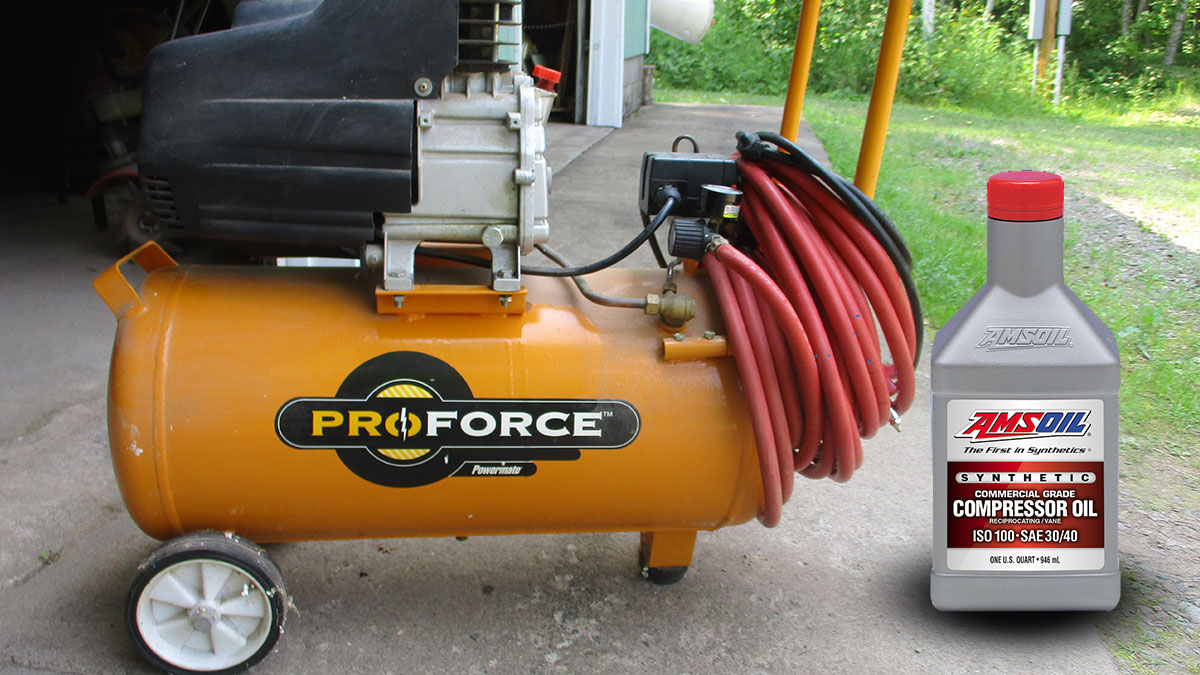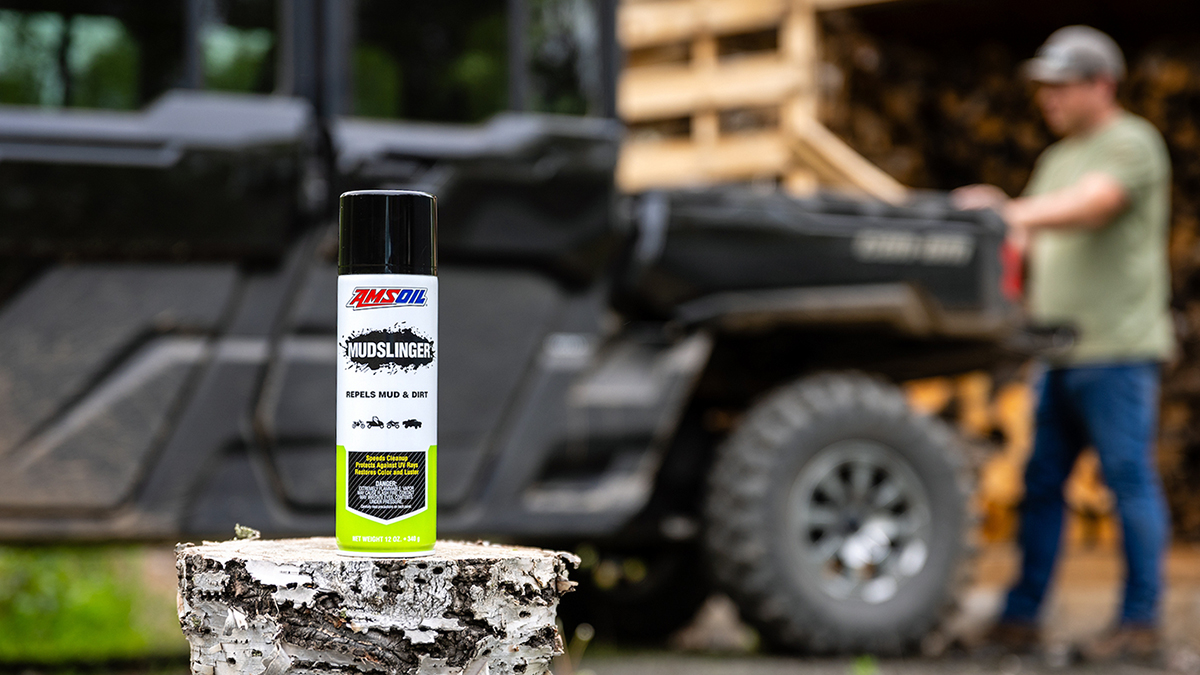Changing oil on most homeowner or contractor compressors is easier than changing oil on your car or truck. Unfortunately, compressor maintenance tends to get overlooked since it’s easy to ignore your air compressor until it breaks. Changing oil will help prevent that. Here’s how to change compressor oil.
This example uses an 11-gallon reciprocating air compressor, like what you’ll find in the garage of any DIY homeowner or on a jobsite. The steps should apply to most compressor brands.
Step By Step: How to Change Compressor Oil
Tools you need:
- Drain pan or similar receptacle for catching the old oil
- Funnel
- Clean rags
- Wrench or socket to remove the drain plug
- The correct viscosity of new compressor oil
While it sounds like a no-brainer, first make sure your compressor even uses oil. Some smaller portable compressors are defined as “oilless” and don’t use oil. I have a small compressor I use mostly for running a light-duty nail gun that doesn’t require oil.
Once you’ve determined that your compressor requires oil, try to remember where you stashed the owner’s manual and look for any special oil-change instructions the manufacturer provides. Note the proper type of compressor oil to use and ensure you have enough on hand. Most compressors require less than a quart of compressor oil.
Locate the oil-fill cap, sight glass and drain plug. On some units, the sight glass doubles as the drain plug. Components are usually accessible, but if not, remove any shrouds or other components that may be in your way.
Note the oil level in the sight glass. It should be about halfway up the glass, noted by the red dot.
Before draining the oil, run the compressor for a couple minutes. This warms the oil so it will flow more easily and helps remove contaminants that may have settled in the oil sump.
Place a catch can or drain pan under the drain plug and drain the old oil.
On some models, the drain plug may be positioned in an awkward place that doesn’t allow positioning a drain pan directly underneath. Use a small funnel, piece of metal or other device to direct the old oil into the pan.
Check the old oil for contaminants, such as metal particles. Also check for a milky color, which indicates moisture. This clues you into potential problems that may require fixing.
Check the condition of the drain plug O-ring and replace it if it’s nicked or deformed. Wipe the drain plug and drain-plug opening with a clean rag. Replace the plug and torque it to the specs in your owner’s manual. If you don’t know the right specs, snug it down and avoid over-tightening.
Next, remove the fill cap and add the proper amount of new compressor oil. Use the sight glass to determine the correct fill level. Like I said, most home compressors take only a pint or two of oil, so you won’t need to add much.
Replace the fill cap and you’re done. That’s all there is to changing compressor oil.
How often should I change air compressor oil?
How often you should change compressor oil depends on the type of compressor you have and your operating conditions. While some large industrial compressors can go thousands of hours between oil changes, smaller homeowner/contractor reciprocating compressors require oil changes more often.
Just how often is tough to nail down.
There’s no good rule of thumb given the variability of operating conditions, so check your owner’s manual for specific recommendations. The manufacturer of the compressor shown in this demonstration recommends changing oil every 100 hours, which is typical of homeowner compressors.
Regardless how often you use your compressor and the operating conditions, check the oil level every time you use it. Used oil analysis is the best way to determine oil condition and how much longer you can use it.
What is compressor oil?
Air compressor oil and motor oil aren’t the same thing. Be sure to use an oil specifically formulated for air compressors. It’ll help protect against wear, resist water contamination, reduce heat and maximize compressor life.
Unlike motor oil, compressor oil doesn’t contain detergents. This is by design. Oil with detergents tends to emulsify with water. Non-detergent oil demulsifies with water, allowing it to settle at the bottom of the sump and be drained out.
Compressor oil is also formulated to deliver excellent air-release properties and foam control.
The piston in a reciprocating compressor moving up and down thousands of times per minute whips air into the oil, creating foam. If foam passes between metal components, the bubbles can collapse leaving no oil in its place to keep metal separated.
Compressor oil is formulated to release air quickly to help prevent foam for maximum protection.
Use the correct viscosity compressor oil
As with your car or truck, your compressor requires a specific viscosity of oil, generally ISO 68 or ISO 100. The viscosity is printed right on the oil label.
Check your owner’s manual for that information. It may also be stamped somewhere on the compressor itself.
It’s important to use the correct viscosity for best protection. Using a viscosity that’s too thin can reduce wear protection, while a compressor oil that’s too thick can reduce energy efficiency and increase operating temperature, which leads to oxidation and shortens oil life.
Synthetic or conventional compressor oil?
While conventional oil offers a reduced initial price, it carries potentially increased overall cost compared to synthetic oil.
Synthetic compressor oil does a better job protecting against wear and reducing heat. It also remains fluid at cold temperatures better than conventional oil, which helps improve start-up protection and energy efficiency, especially for people who live in cold climates.
Personally, my garage can swing from -20°F (-29°C) during January to nearly 100°F (38°C) in July, so I want to be sure the oil in the compressor can handle such a large temperature range. Synthetic oil provides better extreme-temperature stability than conventional, so I use AMSOIL Synthetic Compressor Oil.
Now you know how to change compressor oil. As I said, it’s a simple task anyone with basic tools can perform. Make it a part of your home maintenance program so your compressor keeps humming along for years to come.











Comments
Share: